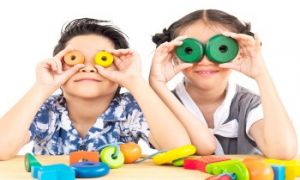Creating interest areas within an early childhood settings are beneficial to both children and educators. For children, interest areas guide play, exploration and discovery which are all used to foster children’s holistic development. Interest areas enable educators to think intentionally about how to organize the space and involve the children to provide accessible materials that engage children and enhance their play experiences.
Art and Craft
When children apply paint to paper, glue things together, or pound a lump of clay, they experiment with colour, shape design and texture. Children express their individual ideas and feelings with art materials such as paint, clay, markers, crayons, paste and collage materials. As they view their own creation and those of their friends, they learn to value and appreciate differences. For young children the process of creating is what is most important, not what they actually create.
Engaging in Art n Craft experiences benefits all aspects of children's development. Children, who cannot express what they feel and think and how they view their world in worlds, may be able to do so more readily through art. Listed below are some suggested learning objectives that support a child's overall development.
- Enables children to assert individuality (drawing a pumpkin that is different in colour and design).
- Assists children to express feelings (selecting bright colours for a painting to match a playful mood).
- Develops an understanding of cause and effect (observing what happens when blue paint is added to yellow).
- Creates the ability to label shapes and objects (painting a yellow circle and calling it a sun).
- Helps develop planning skills (determining which colour finger paint to assemble before starting work).
- Provides opportunities for children to learn directionality (painting a circle with one continuous brush stroke).
- Continues to develop fine motor skills.
The purpose of art experiences is to allow children to explore on their own, using materials in their own ways. This enables the children to learn that their own abilities are valued and children will begin to freely participate in the creation of art. Art is a great tool to use to promote children's learning.
Block Play
Blocks are open-ended play materials; there is no right or wrong way to build with them. Sometimes children start with an idea of what they want to make, at other times, the three dimensional design grows as children place blocks together randomly or in patterns. The creations built in blocks are often reminiscent of things they have seen, and so they will begin to name what they build: a house, road or railway train.
In block area, children play together and share experiences. One child's idea of how to build something may differ from another's, so they learn to respect different ideas and learn from each other. As children build together they solve problems and enjoy the benefits of co-operation.
Through block play children learn about sizes, shapes, numbers, order, area, length and weight as they begin to construct and build with blocks. Listed below are some suggested learning objectives that support a child's overall development.
- Enables children to share and co-operate with others.
- Facilitates development in spatial and mathematical realms, by helping children learn to understand concepts of length height weight and area.
- Forces children to predict cause and affect relationships (seeing how high they can build before the blocks fall).
- Involves solving problems related to construction (building a bridge).
- Leads children to make use of physical principles (making towers of blocks for balance, creating supported bridges).
- Involves children in making a sequence.
- Involves classifying and sorting objects by size, shape and function (placing blocks of the same size together).
- Leads children to utilize emergent reading and writing skills (making signs for building).
- Provides children to demonstrate pride in accomplishments and develop a positive self confidence.
- Involves the use of mathematical operations such as addition, subtractions and fractions (judging how many blocks are needed to fill a space).
Blocks are an essential interest area in the childcare setting. Although often thought as a resource for physical and social development, blocks also enable children to explore concepts across all developmental learning areas.
Construction Area
Construction involves children building and making things no one has seen before. Children are offered a variety of materials and begin to sort, arrange and construct using their ideas and imagination. Through construction it provides children an opportunity to invent and discover new possibilities.
Making things is an experience that enables young children to learn successfully. They combine the dexterity of their ?ngers with the power of their imagination to develop representation and the capacity for creative visual symbolising. Listed below are some suggested learning objectives that support a child's overall development.
- Children develop flexibility, creativity and courage.
- Enables children to learn visual spatial awareness.
- Social development increases while interacting and working with others.
- Children begin to solve problems and develop problem solving skills while constructing.
- Enables children to co-operate with one another (sharing and taking turns).
- Awareness of common shapes and attributions.
- Enhanced vocabularies as children begin to describe their idea of what they are making.
Constructive play is organized and children have a clear goal in mind when creating or building something. It involves open ended exploration and transforms to make believe transformations. During constructive play children express ideas, feelings, questions and relationships develop between the educators and the children themselves.
Computer Area
Many children today have access to and are familiar with computers. In today's society, it's important for us to be computer-literate and enable all children to become comfortable with computers.
Children, who have access to a computer and are encouraged in computer play, discover open ended play that are both rewarding and enriching. The computer area should allow children to learn in a variety of ways, at a pace that meets their individual needs.
Computer programs and software for children, promote making choices, creativity and solving problems. It also encourages the children to use their fine motor skills by incorporating simple keyboard and mouse movements within the children's programs.
Children benefit from computer play in the same ways as they do from other developmental activities. By considering the needs of each child in your program, you can help children grow in many ways. Listed below are some suggested learning objectives that support a child's overall development.
- Children develop perseverance (seeing a program / task through to completion).
- Enables children to develop pride (print completed work).
- Encourage children to work co-operatively with others (working in pairs on the computer).
- Helps children develop early reading skills (matching words to graphics).
- Identify and sort objects (using programs that develop classification skills).
- Improves children's visual skills (following moving objects on the screen).
- Extends children's creativity (using programs that encourage free exploration).
- Allows children to understand cause and affect relationships (seeing what happens when certain keys are pressed).
Computers are an important part of today's society and they do provide children with a wider range of developmental learning skills. The software and programs that are available for children encourages them to learn, explore, create and imagine across all developmental areas. The computer area is an essential part to the children's overall development.
Cooking Area
Cooking experiences teach children how food is prepared and cooked and how it contributes to their health and wellbeing. Children enjoy cooking experiences as it is one of the few activities which allow them to do exactly the same thing that adults do.
Cooking can be considered one of the most enjoyable activities on the program. It is also a real hand on experience as children begin to develop skills in other areas. For example, as children melt cheese, they learn about science, as they measure a cup of milk for the cake mix, they learn about measurement and volume. As the children peel carrots, knead dough and stir mixtures they are not only supporting their physical development, the children are also extending their vocabulary.
Preparing food with the children, teaches them about good nutrition and cultural preferences. Children work together to see a task through to completion and take pride in a group task. Listed below, are some suggested learning objectives that supports a child's overall development.
- Children learn to develop independence (following a recipe by referring to picture signs).
- Encourages children to work cooperatively (sharing and taking turns when using cooking equipment).
- Enables children to develop self-help skills (preparing own snacks).
- Helps children to learn about nutrition (preparing a healthy snack).
- Develops fine motor control (chopping vegetables, squeezing lemons, stirring batter).
- Enhances hand / eye co-ordination (cracking an egg).
- Children begin to understand direction (stirring clock wise and anti-clock wise).
- Gain an understanding of maths concepts (such as measuring and sequencing).
Cooking activities are wonderful opportunities for children to have practical firsthand experience of exploring the world of food. Not only do the children learn how food is prepared but they are also able to extend on their vocabulary. It's important to encourage each child's language development through cooking by: talking to a child about how food smells tastes, looks and feels, explaining how heat changes food, the names of various foods, how many cups or teaspoons of an ingredient you are using. Cooking appeals to children's senses and provides a wealth of learning opportunities.
Home Corner
Pretend play is very important for children's development and learning. In the house corner children can take on and try out roles from familiar family scenes, local community's experiences and imaginative fantasies.
Although this area of the room may be called the house corner, it can be transformed by the children or teacher into a supermarket, restaurant, and post office the choices are endless!
As children act out roles, they develop many skills. They play co-operatively; negotiate turns, exchange ideas and work together to solve problems. Listed below are some suggested learning objectives that support a child's overall development.
- Enables children to draw on past information and experiences to solve problems (the doctor gives me a needle in my arm).
- Helps children identify solutions to problems that arise during play (what are we going to do, I can't feed the baby, there is no food in the house. I have to buy some from the shop).
- Encourages children to preserve at a task (remaining involved in a play episode for an increasing amount of time).
- Assists children in identifying and planning play episodes with others (you be the shopkeeper and I'll buy the food).
- Improves fine motor skills (putting on dress up clothes and fastening, unbuttoning, zipping etc).
- Allows children to arrange objects according to size (cleaning up props and returning them to labelled places).
- Use symbols to represent real objects and situations (using a block to represent a telephone).
- Addresses fears and worries (trying out new roles and re-playing difficult and scary experiences).
- Children learn to play co-operatively with others (taking turns and sharing materials).
In dramatic play, children draw open their previous experiences. This enables children with an opportunity to act out any episodes which may have been scary or difficult to deal with.
Library Area
A library is an essential part of a early childcare setting. It provides children with an opportunity to listen to stories and poems, explore books and a variety of reading materials. The library area can include: a writing centre and listening area with story tapes for the children to listen to, felt boards and puppets. These materials along with storytelling by the teachers and children promote children's language and cognitive development. It also facilitates the growth and development in other areas of science, maths, history etc.
By reading stories or providing books to the children on a particular topic (such as a birth of a sibling or visiting the doctor) helps children to understand that their feelings, questions and problems are common and provides them with the self confidence in dealing with their feelings or questions.
A library area can be used to accomplish a wide range of learning objectives. Listed below, are some suggested learning objectives that supports a child's overall development.
- Increases a child's vocabulary (learning the names of various objects from a picture book).
- Children begin to recognize objects, colours and shapes (pointing to objects on a felt board or in books).
- Enables children to understand sequence (opening up a book and turning the pages in order).
- Develops children's storytelling abilities (creating a story with drawings or scribbles).
- Encourages children to recognize site words (recognizing own name and familiar words).
- Develops fine motor skills (writing / drawing with a texta).
- Strengthens children’s eye muscles (following pictures and words in a book as it is being read aloud).
- Children develop phonetic awareness (recognizing rhyming sounds and thinking of other words with that sound).
A library area is important to the overall program for developing literacy skills in children. It is important to encourage each and every child with their language and literacy development by: asking a child questions while looking at pictures together, asking a child to predict what will happen next in the story and to encourage a child to repeat words, rhymes and phrases that have been memorized. As children learn to love books, it helps children to develop their own language and literacy development.
Music and Movement
Children begin to learn that music and movement communicate messages and represents actions. Most children start learning about their world by acting on objects and people and begin thinking with their bodies before using words. By using movement children aren't limited by their verbal abilities. For example, when asking a group of children “what are some other ways you can think of, to get from this side of the room to the other”. Children will more likely respond through movement rather than verbally.
Singing or chanting can help make routine activities and transitions smoother and more enjoyable. Music tempo also helps to set up a mood. Quiet, soothing music calms and relaxes children, while a lively tune creates an energetic clean up. Children are also encouraged to develop their social development as music and movement activities help children feel part of the group.
Music naturally delights and moves most children. Throughout the early childhood years, children are learning to do new things with their body and music and movement encourages children to explore what they are able to do. Listed below are some suggested learning objectives that support a child's overall development.
- Children develop social skills by playing co-operative musical games (such as ring a ring a rosy or musical statues).
- Gives children a chance to recognize that music and dance can express moods and different feelings in an appropriate social way.
- Increases children's awareness of different movements (fold your legs like the frog in the song).
- Improves children's balance, co-ordination and rhythm through dancing and other movement activities.
- Helps to develop children's fine motor skills (learning finger plays and playing musical instruments).
- Develops children's creativity and imagination by responding to music through movement.
- Refines children's listening skills by noticing changes in rhythm, beat or tempo (clapping fast or slow).
Music and movement aren't adapted to one specific location. Music makes its way into many activity areas. Children may create their own songs or chants in the home corner or begin re-telling nursery rhymes in the library area. Incorporating music and movement activities throughout the program encourages children to express themselves.
Outdoor Area
Outdoor play is enjoyable for children and important for their growth and development. When outdoors children are able to run, skip, jump, climb, throw, hop and catch and use their outside voices, which provides a healthy break from being inside. Being outside gives children the opportunity to stretch their muscles, breathe fresh air and enjoy the freedom of space.
Many times outdoor settings are much more than physical activity. They provide children with opportunities for learning and what goes on outdoors. Science for instance, comes alive as children explore nature and make first hand observations. While outside, children are using all their senses to discover their world. Children see leaves changing colour, touch trees, hear birds or simply smell the air.
Just as you would design and arrange the indoor space. You must give careful thought to ensure that children are exposed to activities and materials that support growth and development. Listed below are some suggested learning objectives that support a child's overall development.
- Children develop decision making (choosing an outdoor activity).
- Enables children to re-enact life experiences (playing as a fire fighter, painting a fence with water).
- Encourages children to develop and co-ordinate hand / eye movements (catching, throwing etc).
- Helps children develop gross motor skills (climbing, swinging, jumping etc).
- Children have a better understanding of spatial awareness (swinging, climbing up, down, over or under).
- Develops children's balance (using the balance equipment, walking on different surfaces).
- Increases children's vocabulary (learning new names for natural objects, plants, birds animals).
- Demonstrates children's social skills (participating in social play with other children).
Being outdoors provides an endless amount of opportunities for children to explore and discover. Children will begin to notice changes in the weather, listen to different sounds and explore natural objects, which you can use to encourage further learning outdoors with children.
Puzzle Play
When a child completes a puzzle they are acquiring many skills without even realizing it. Puzzles enable a child to develop problem solving skills on how to place a piece in the correct space, cognitive skills through visual space awareness, fine motor skills to learn how to grasp and pick up pieces through manipulation, hand/ eye co-ordination by placing puzzle pieces in correct order and social skills by completing puzzles with peers.
Puzzles based on numbers, alphabets or animals will provide a child with the ability to learn those concepts and improve their knowledge. Self-esteem and confidence will also increase as a child begins solving different puzzles. By completing different types of puzzles, children will learn how to solve problems using different methods. Listed below are some suggested learning objectives that support a child's overall development.
- Allows children to learn the concepts of parts and whole.
- Enables children to build visual – perceptual skills.
- Children develop attention skills and concentration.
- Improvement of hand – eye coordination and fine motor skills.
- Assists language skills as children talk about what they are doing while completing the puzzle.
- Enables children to extend on thinking skills such as remembering, matching, sorting, recognizing and problem solving.
As children begin to work on a puzzle puzzles, they will develop strategies to complete the puzzle faster and more efficiently. They may begin by doing all the pieces on the edges or sort the pieces into colours and shapes. Puzzles enable children to achieve small goals while working towards a larger goal.
Sand and Water Play
The natural attraction that children have with these mediums makes them perfect for exploring in the childcare room. Sand and water play can be two separate activities or formed into one. Sand and water each provides children with many learning experiences. While playing with sand, it provides children with options to shape, rake, shovel or build with the sand. Water gives the children options of splashing, pouring and mixing.
Children's exploration with sand and water naturally help build various skills. A child, who sifts sand and scoops water, will naturally improve their physical development. Children working together to make a sand castle develop their social skills. At the same time the children enhance their cognitive development as they begin to explore things like why certain objects sink or float and adding water to sand allows for easier building and more.
Children benefit most from sand and water play when you guide their play and interactions. Listed below are some suggested learning objectives that supports a child's overall development.
- Enables children to develop pride and negotiating skills (asking others not to knock down a sand castle that's just been built).
- Children begin to explore social roles (washing and drying dishes).
- Encourages children to play co-operatively with others (sharing and taking turns of sand and water play equipment).
- Develops children's creativity (moulding wet sand into different shapes).
- Teaches problem solving skills (figuring out how to dig a tunnel in wet sand so it won't collapse).
- Children improve co-ordination skills (filling up measuring spoons and cups).
- Develops child hand / eye co-ordination (shoveling sand into a bucket).
- Gives children an understanding of cause and effect relationships (predicting what will happen when water is added to the sand).
Through Sand and Water play children begin using skills of maths and science, through hands on experience. When children begin mixing water with sand, it provides children with an understanding of cause and effect relationships. When water is added to the sand, the sand becomes firmer and the water is absorbed. The wet sand is a lot heavier than before and therefore the density has changed too. Wet sand can be manipulated through moulding or being shaped. Sand and Water play can also be used to effectively to calm children's minds and bodies.
Science and Nature
Science and Nature enables children to learn about facts and the world around them. Through first hand experiences science and nature provides children to be engaged through investigating and exploring which will support to develop their ideas and learning.
When discovering science and nature in informal, hands on approach with familiar environments, it’s the best ways to engage and inspire children in a sense of wonder. Science and Nature supports children to develop observations and creativity and develop a sense of being. It also supports children to develop their natural curiosity and provide them with an opportunity to explore their curiosity and theories. Listed below are some suggested learning objectives that support a child's overall development.
- Children establish self-confidence and confidence in their environment.
- Gain necessary first hand and hands on experiences.
- Develop basic concepts.
- Increased observation skills.
- Receive opportunities to use tools, equipment and familiar materials.
- Receive aid in problem solving.
- Stimulate curiosity for exploration and discovery while increasing basic knowledge.
- Develop sensory, physical, emotional, intellectual, spiritual, and social attributes.
- Develop language through increased vocabulary and an opportunity to ask and answer questions.
Through positive experiences in science and nature, children will develop their love of both and a foundation for the development of responsible environmental behaviour and a greater appreciation and understanding of the world around them.
Sensory Play
Sensory experiences enable children to use their senses to explore and manipulate objects. Through touch, smell, hear, seeing and tasting it contributes to a child’s overall learning. When exploring through sensory play children will also begin to classify objects based on different textures, which is an important part of learning.
Sensory play facilitates exploration and naturally encourages children to use scientific processes while they play, create, investigate and explore. Spending time stimulating their senses helps children develop cognitively, linguistically, socially and emotionally, physically and creatively. Listed below are some suggested learning objectives that support a child's overall development.
- Children develop cognitive skills such as problem solving and decision making.
- Begin to understand mathematical concepts such as comparing sizes, counting, one to one correspondence, sorting and classifying.
- Introduced to basic science skills such as cause and effect.
- Start to make predictions and observations.
- Encourages children to use descriptive and expressive language.
- Children learn about co-operation and collaboration.
- Hand /eye co-ordination and small muscle movements develop.
- Supports children’s creativity and builds self-esteem.
Sensory play enables children the opportunity to investigate materials with no per-conceived knowledge through the use of their senses.
Toy Table
Toy tables are games, manipulative projects, puzzles and collectibles that children can play with at the table or on the floor. These are quiet activities the children can do alone, with a friend or a teacher. They offer children challenging opportunities to learn new skills.
Table toys can also serve as excellent tools for working with children individually, and in small groups. Providing a good variety of table top toys with differences in texture, colour, shape and degree of difficulty, would provide opportunities to each child's developmental learning.
Children grow in all areas of their development as they play with table top toys. They have to share and take turns as they play a game or build an intricate design. Kids develop a feeling of competence when they complete a puzzle or finish a project. Listed below are some suggested learning objectives that supports a child's overall development.
- Children experience pride in accomplishments (seeking a task from start to finish).
- Enables children to demonstrate perseverance and self-discipline (working with a puzzle until it has been completed).
- Assists children to refine the sense of touch (learning to distinguish toys made from different materials).
- Creates creative ability (experimenting with open ended toys).
- Provides opportunities for children to sort and match object by attributes such as colour, size texture and shape (using collections- buttons shells bottle-tops etc).
- Children begin to work cooperatively in small groups (playing lotto dominoes and memory and matching games).
- Enables children to develop self-control (sharing toys and waiting for their turn).
- Helps children develop hand eye coordination.
- Assists in the development of fine motor control.
By using a toy table, children are able to explore and experiment at their own pace. This being a quiet activity effectively helps children to concentrate and feel calm.


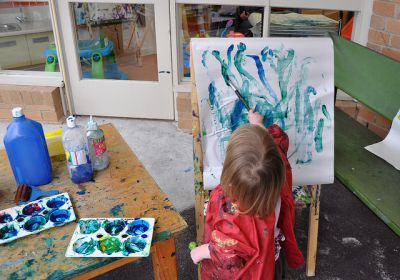
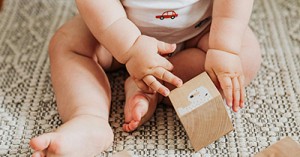
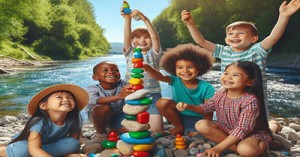
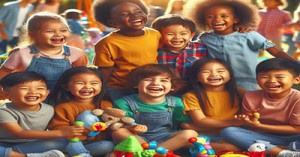
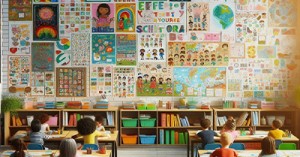
 As an Educator in Australia, your pay rate falls under the Children’s Services Award 2010. This award states the minimum amount that an employer can
As an Educator in Australia, your pay rate falls under the Children’s Services Award 2010. This award states the minimum amount that an employer can When working as a qualified Early Childhood Teacher (with a university degree) within a service, your rate of pay will come from the Educational Services
When working as a qualified Early Childhood Teacher (with a university degree) within a service, your rate of pay will come from the Educational Services When working as a Diploma Qualified Educator your pay rate is from the Children's Services Award 2010. This Award states your minimum rate of pay
When working as a Diploma Qualified Educator your pay rate is from the Children's Services Award 2010. This Award states your minimum rate of pay When working as a Cert 3 Qualified Educator, your pay rate is from the Children's Services Award 2010. This Award states your minimum rate of
When working as a Cert 3 Qualified Educator, your pay rate is from the Children's Services Award 2010. This Award states your minimum rate of Educational Leaders play a crucial role in their early childhood service by ensuring that the educational program aligns with best practices and supports the holistic
Educational Leaders play a crucial role in their early childhood service by ensuring that the educational program aligns with best practices and supports the holistic In early childhood education and care, ratios are more than a technicality—they are a frontline safeguard. Every child deserves responsive supervision, emotional connection, and developmental
In early childhood education and care, ratios are more than a technicality—they are a frontline safeguard. Every child deserves responsive supervision, emotional connection, and developmental With the new national child safety reforms kicking in on 1 September 2025, early childhood services like yours have a real opportunity to lead the
With the new national child safety reforms kicking in on 1 September 2025, early childhood services like yours have a real opportunity to lead the Here’s a comprehensive Mobile Phone and Smart Watch Policy tailored for early childhood education and care (ECEC) services in Australia, aligned with the latest 2025
Here’s a comprehensive Mobile Phone and Smart Watch Policy tailored for early childhood education and care (ECEC) services in Australia, aligned with the latest 2025 The Sea of Fish Challenge is a national initiative that invites children, educators, families, and communities to create and display fish artworks as a symbol
The Sea of Fish Challenge is a national initiative that invites children, educators, families, and communities to create and display fish artworks as a symbol Across the early childhood education and care sector, educators are sounding the alarm: current staffing ratios are insufficient to deliver safe, meaningful, and developmentally appropriate
Across the early childhood education and care sector, educators are sounding the alarm: current staffing ratios are insufficient to deliver safe, meaningful, and developmentally appropriate
